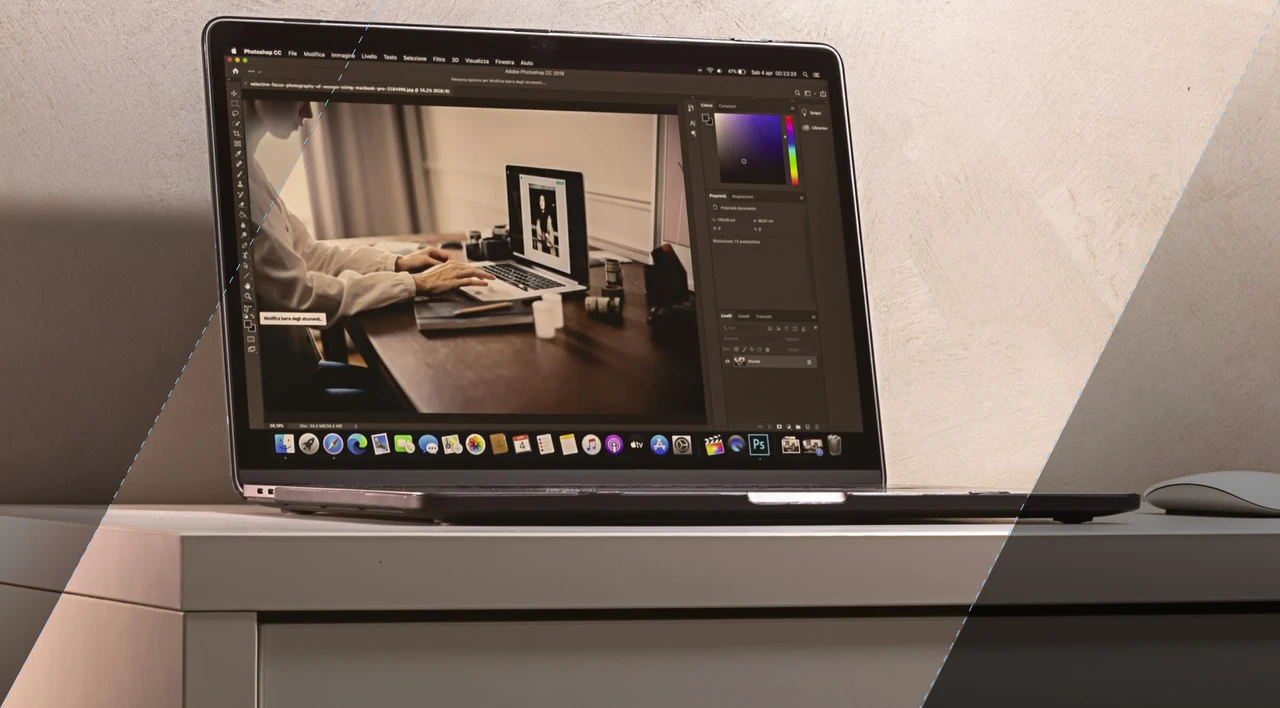Contents
Contents
With the design market expected to reach $53.27 billion in 2024 at a compound annual growth rate (CAGR) of 5.4%, the demand for intuitive and visually captivating designs has never been higher. In this dynamic landscape, choosing the right design tool is not just a matter of preference but a strategic decision crucial for staying competitive. Enter Adobe XD and Figma, two industry giants renowned for their prowess in UX/UI design.
In this article, we’ll delve into the intricacies of Figma and Adobe XD to help you navigate the complexities and make an informed choice. Join us as we explore the features and capabilities of these powerful design tools to determine which one is the perfect fit for your design workflow.
Key Takeaways:
- Both Figma and Adobe XD offer robust features tailored to meet the needs of UX/UI designers, including powerful vector design tools, comprehensive prototyping capabilities, and seamless collaboration features.
- The choice between Figma and Adobe XD depends on your specific requirements, design preferences, collaboration needs, and familiarity with other Adobe products.
What is Figma?
Figma is a browser-based vector interface design and prototyping tool that has quickly become a favorite among UX/UI designers. Its intuitive interface, comprehensive feature set, and rich collaboration features make it a top choice for professionals in the field. This is evident as Figma’s user base has grown by over 200% since 2018.
With Figma, UX designers can create stunning vector-based designs and prototypes, allowing for precise control over every element on the canvas. The browser-based nature of Figma ensures that you can access your designs from any device, making it a convenient choice for collaborative work or remote teams.
Key features of Figma
- Powerful vector interface design and prototyping capabilities
- Comprehensive feature set for creating professional-grade designs
- Browser-based, allowing for easy access and collaboration
- Seamless integration with other design tools and platforms
- Effortless sharing and real-time collaboration with team members
- Adaptable to different design workflows and preferences
|
Figma Features |
Description |
|
Vector interface design |
Create scalable and resolution-independent designs using vector-based elements. |
|
Prototyping tool |
Create interactive and clickable prototypes to simulate user interactions. |
|
Comprehensive feature set |
Access a wide range of tools and functionalities to bring your designs to life. |
|
Browser-based |
Work on your designs from anywhere with an internet connection, without the need for software installation. |
|
Rich collaboration features |
Collaborate with team members in real-time, leave comments and feedback, and track changes easily. |
|
UX design focus |
Create user-centric designs that prioritize usability and enhance the overall user experience. |
What is Adobe XD?
Adobe XD is a vector-based design tool specifically built for UI design in mobile and web applications. Unlike other Adobe products such as Photoshop or Illustrator, Adobe XD is designed to be lightweight and focused on rapid design and prototyping iterations. It offers a streamlined and efficient workflow, allowing designers to quickly create and iterate on user interfaces.
Key features of Adobe XD
- Adobe XD allows designers to create multiple artboards within a single document.
- With built-in prototyping tools, designers can create interactive prototypes with transitions, overlays, and animations to simulate the user experience.
- Adobe XD features built-in collaboration tools, allowing multiple designers to work on the same project simultaneously and share feedback in real-time.
- Adobe XD seamlessly integrates with other Adobe Creative Cloud applications, allowing designers to import assets from Photoshop and Illustrator and export designs for further editing in Adobe After Effects.
- Adobe XD simplifies the handoff process by automatically generating design specs and assets, making it easier for developers to implement designs accurately.
Figma vs Adobe XD: Features Comparison
When comparing Figma and Adobe XD, it is important to consider their features. Figma is a browser-based design tool that can be used on any platform, offering convenience and flexibility. On the other hand, Adobe XD is a desktop app available for Windows and macOS, providing a dedicated environment for your design work.
Both Figma and Adobe XD have user-friendly interfaces that make it easy for designers and developers to create stunning designs. Figma stands out with its flexible vector design tools, allowing users to create intricate and detailed designs with ease. On the other hand, Adobe XD is known for its simplicity and focus on UI design, providing a streamlined workflow for creating visually appealing user interfaces.
When it comes to responsive design, Figma offers a powerful auto layout feature that allows designers to easily create responsive designs that adapt to different screen sizes. This feature simplifies the design process and ensures consistency across multiple devices. Adobe XD, on the other hand, offers a responsive resize tool that allows designers to quickly adjust their designs for different screen sizes, providing a fast and efficient way to create responsive user interfaces.
In terms of design systems, Figma allows for both local and team-based systems, allowing designers to create and manage design components and styles. This feature promotes consistency and efficiency in design workflows. On the other hand, Adobe XD integrates seamlessly with Creative Cloud, enabling collaboration and sharing of design assets across the Adobe ecosystem. This integration enhances teamwork and allows for smooth collaboration between designers and other stakeholders.
|
Figma |
Adobe XD | |
|
Supported Platforms |
Browser-based, works on any platform |
Desktop app for Windows and macOS |
|
Interface |
User-friendly with flexible vector design tools |
Simple and focused on UI design |
|
Responsive Design |
Auto layout feature for responsive design |
Responsive resize tool |
|
Design Systems |
Allows for local and team-based systems |
Integrates with Creative Cloud for collaboration |
|
Collaboration and Sharing |
Rich collaboration features |
Integration with Creative Cloud for seamless sharing |
Conclusion
After comparing the features and strengths of Figma and Adobe XD, it is clear that both are powerful design tools that cater to different needs. Figma stands out for its adaptability, collaboration features, and flexible vector design tools, making it a popular choice among UX/UI designers. With Figma’s browser-based platform, you can seamlessly work on any device and collaborate with your team in real-time.
On the other hand, Adobe XD offers simplicity, seamless integration with other Adobe products, and a focus on UI design. It is an excellent option for designers who require fast design and prototyping iterations. Adobe XD’s interface is user-friendly and its connection to the Adobe Creative Cloud ecosystem enables a smooth workflow for designers already using Adobe software.
Ultimately, the choice between Figma and Adobe XD will depend on your specific needs and preferences. Consider factors such as your design workflow, team collaboration requirements, and the importance of rapid prototyping. Both tools have free trial periods, so take advantage of those to try them out and see which one aligns best with your design goals. Whether you choose Figma or Adobe XD, you can rest assured that you are using a top-notch design tool that will enhance your creativity and productivity.
If you’re looking for help with your application, read more about Flatirons’ UI/UX design services.
Frequently Asked Questions
What is the difference between Figma and Adobe XD?
Figma and Adobe XD are both popular design software used for UX/UI design. Figma is primarily a cloud-based design tool, while Adobe XD offers collaboration features and integrates well with other Adobe products like Photoshop.
Which one is better for UX design, Figma or Adobe XD?
Figma is considered the clear winner for UX design as it enables designers to work collaboratively in real-time and offers a free plan with robust design features.
Why should I choose Figma over Adobe XD?
Figma excels in enabling designers to work seamlessly, especially when it comes to collaboration and sharing design files. It is also widely used in the design community and offers a free version with essential features.
Does Adobe XD offer any advantages over Figma?
Adobe XD provides collaboration features and integrates well with other Adobe Creative Cloud apps, making it a preferred choice for designers who are already accustomed to Adobe tools and workflows.
Can I use both Figma and Adobe XD for my design projects?
Yes, many designers use both Figma and Adobe XD, depending on their specific project requirements. Each tool has its strengths and can complement each other in different aspects of the design process.
Which tool offers a better user experience, Figma or Adobe XD?
Both Figma and Adobe XD offer user-friendly interfaces and design features tailored for UX designers. Ultimately, the choice between the two comes down to personal preference and specific project needs.
Can I use the pen tool in both Figma and Adobe XD?
Yes, both Figma and Adobe XD offer the pen tool for creating custom shapes and paths in your designs. The pen tool functionality may vary slightly between the two tools, but both are capable of intricate design work.
UI/UX Design Services
UI/UX design services tailored for your unique needs.
Get the CEO's Take
Handpicked tech insights and trends from our CEO.
UI/UX Design Services
UI/UX design services tailored for your unique needs.
Get the CEO's Take
Handpicked tech insights and trends from our CEO.

Digital Product Development: Enhance Your Business Offerings
Flatirons
Sep 12, 2025
Utilizing Critical Incident Technique for Qualitative Research in UX Design
Flatirons
Aug 03, 2025
Light Mode vs Dark Mode: Which One is Better for You?
Flatirons
Jan 04, 2025
Top UI/UX Design Companies in California for 2026
Flatirons
Nov 30, 2024
Learn the Essentials of Digital Product Design
Flatirons
Nov 26, 2024
Top UI/UX Design Companies in Colorado for 2026
Flatirons
Nov 12, 2024